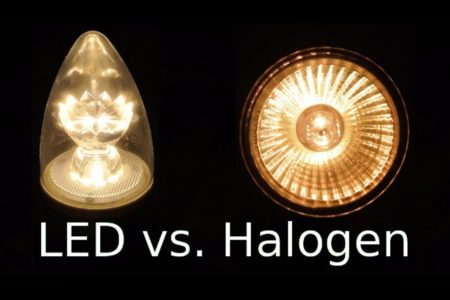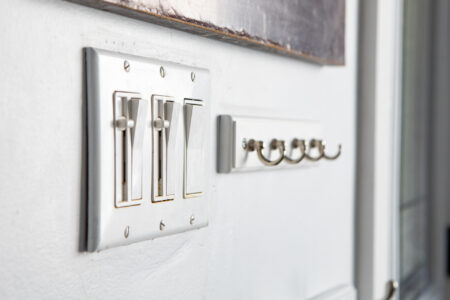So you’re a fur parent and have installed some new LED lights in your home. Now you’re wondering if LED lights are bad for your dog’s eyes? Stick around and we’ll find out the details and if there’s anything to worry about.
Do LED Lights Harm Your Dog’s Eyes?
Quick answer: Not necessarily! LED lights, in themselves, don’t harm your dog’s eyes. However, they may still pose a threat to your fur baby under certain conditions.
LEDs aren’t bad for your dog’s eyes as long as you’re mindful of how you use them when your pet is around. Also, taking the essential steps (included here) will help keep the potential harm at bay!
How Does Your Dogs Vision Work?
Addressing your concern with the right information will help you navigate things better. That said, let’s see how our fur friends perceive the world. Dogs see differently from humans.
Their vision is unlike ours in terms of:
- Color perception
- Visual acuity
Color Perception
Similar to us humans, dogs possess light-sensitive cells in their retinas called cones and rods. These cells are also called photoreceptors.
The cones manage our perception of colors and vision in daylight. Rods are responsible for our peripheral perception and ability to see in the dark.
One distinction that sets our vision apart from that of dogs is the number of cones in our retinas. Dogs’ retinas have two cones, ours have three.
That’s why dogs are dichromatic. Our fur friends can only determine hues of blue and yellow. They’re colorblind to red and green because they don’t have the third cone that perceives such.
Likewise, this means that colors their eyes can’t recognize often appear to them as gray, automatically. So, we can conclude that dogs perceive the world in only three shades – gray, blue and yellow.
In addition, rods dominate dogs’ retinas instead of cones, so their night vision is far better than ours. That enables them to see dangers lurking in the dark–making them not only man’s best friend but our very own guardians, too!
Visual Acuity
Most dog breeds are near-sighted. This is because they have 20/75 vision. While humans with 20/20 vision can easily perceive things at a distance of 23 meters, dogs can hardly identify objects that are six meters away from them.
This also applies to objects in motion and items that are inanimate. Dogs recognize objects better when they’re moving rather than in stationary mode. For example, dogs can’t discern even their owners if they’re just standing still from afar.
Some motion has to be done for fur babies to realize that it’s their fur parent, vision-wise. Despite that, they’re at an advantage over humans in terms of motion visibility. All thanks to the abundance of rods in their retinas!

How Can LED Lights Be Harmful to Dogs?
LED lights are superior in their energy efficiency compared to older lighting technology. Although it’s the wisest choice for illuminating our homes, our dogs’ safety somehow is at stake with the presence of LEDs around.
As we mentioned earlier, LED lights alone aren’t bad for your dog’s eyes. However, keep in mind these exceptions:
- LED lights with inferior quality
- LED lights with high intensity
LED Lights with Inferior Quality
LEDs can be harmful to your fur friends if they’re substandard or made with cheap parts. This is because low-quality LED lights are most likely to flicker.
Other LED lights even flicker in a manner that’s unperceivable to human eyes. Dogs can still notice that, especially because they’re way too sensitive to the flickering that LED light specifically gives off.
Their sensitivity goes three times further than that of a human. We owe that to the fact that they’re great at detecting motion.
Constant flickering of low-quality LED lights might not only hurt your fur baby’s vision. It can even harm them emotionally by giving them an unsettling feeling. We bet you’ll feel distressed too if you’re in their shoes!
LED Lights with High Intensity
LEDs could also harm your pet if they shine too brightly than the eye can tolerate. Intensity from such harsh light is likely to strain and cause discomfort for your dog’s eyes.
Brightness and instant changes in LED light levels can still affect our dogs, even if their vision differs from ours. Imagine being exposed to too much light, for instance. How would your eyes feel? It’s even worse if your dogs get exposed to that amount of light over prolonged periods.
How LED Lights Affect Your Dog’s Behavior
Technically, while LED lights aren’t bad for your dog’s vision (as long as they’re not what we previously discussed), they’ve got a different impact on your fur baby’s health and activity.
The biological clock, or what we commonly call the body clock, determines our day’s activity and inactivity. Biological clocks regulate cycles that keep our bodies in tune.
One of these cycles is the circadian rhythm; the 24-hour cycle responsible for our sleeping and waking patterns. This rhythm depends on the light and dark of the day.
During the daytime, the sun emits blue light. This blue wavelength keeps us awake by boosting our mood and attention. It even sparks our alertness and helps in our brain and memory functions.
Just like the sun, LED lights release some levels of blue light. Smartphones, computers, and televisions are other sources of this. With LED lights and these devices releasing blue light inside your home, the circadian rhythm is likely to be disturbed.
Interestingly, dogs have the same sleep-wake cycle. With these sources emitting blue light at once, we can’t expect our fur babies to doze off. Their system is simply keeping them awake and active.
What’s worse, the restlessness caused by blue light may later develop into insomnia. It may bring about other health risks as well, even depression.
How Can I Protect My Dog from LED lights?
If you’ve reached this point, you’re probably asking yourself this question. Worry not, fur parent! Here’s how you can protect your fur baby:
- Buy high-quality LED lights.
Strict suggestion: Only buy LED lighting of high quality. Don’t settle for less; be it a bulb, lamp, or strip. Higher quality means less chance of flickering.
- Choose a warm white LED color
When buying, go for LEDs with warm white color instead of blue-white or cool white. Warm white LEDs are healthier for our circadian cycle since cool white emits more blue light.
For bulbs that show a color temperature instead, choose the ones with 27,000 or 30,000K (Kelvins).
- Manage the intensity of your LED lights
Some LED lights can be controlled, but others simply can’t be. If you have control over them, set your lights to a tolerable brightness.
- Keep your dogs from exposure
If you’re maintaining a sleep schedule for your fur baby, keep them away from LED lights at least an hour before bedtime. Furthermore, make sure to not place their bed or sleeping spot near lights.
- Turn off LEDs when you’re away
Switch off or unplug your LED strip lights once you leave home, especially if it’s been a day or longer.






